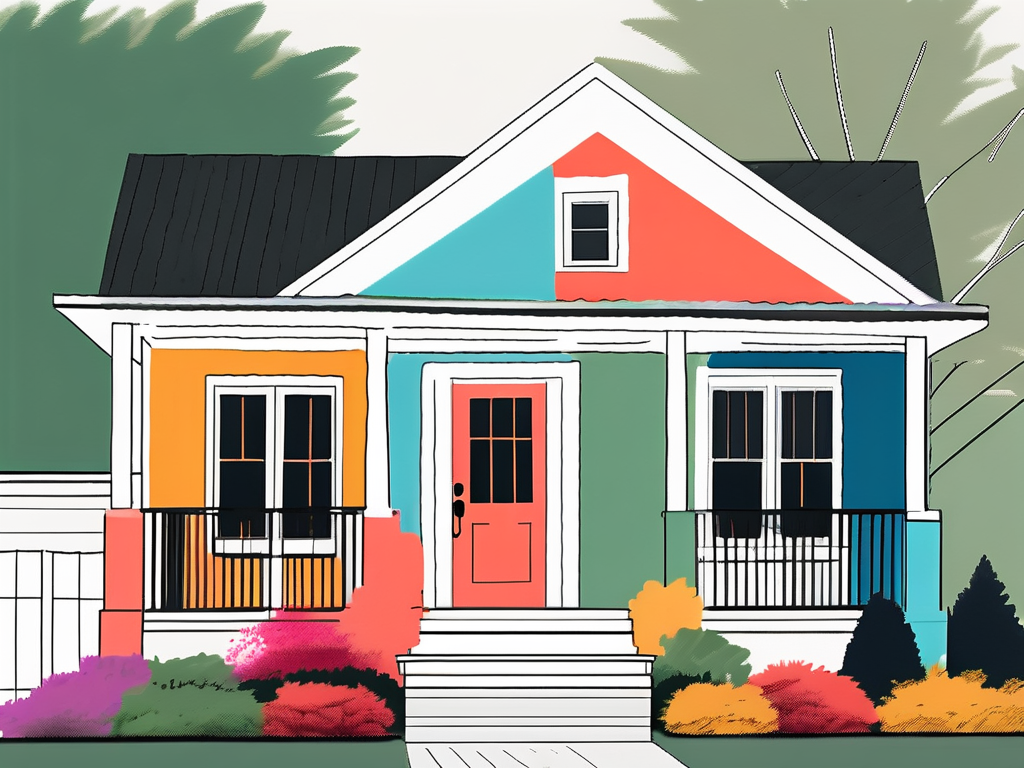Choosing the right paint color for your home can be a challenging yet rewarding aspect of home design. The colors you select can transform a space, evoking different feelings and creating unique atmospheres. In this guide, we will explore the intricacies of color theory, key factors to consider when selecting paint colors, current trends, and effective tips for testing your color choices. With focused attention on your Columbus home, let’s dive in.
Understanding the Basics of Color Theory
Color theory is a foundational component in the art of painting and design, essential for achieving aesthetically pleasing results. It encompasses the color wheel, color harmony, and the context in which colors are used—each impacting the final look of your home. By understanding these principles, you can make informed decisions that reflect your personal style while enhancing the functionality of your spaces.

Moreover, color theory is not just about choosing colors; it also involves understanding how different colors interact with each other. Complementary colors, which are opposite each other on the color wheel, can create vibrant contrasts that draw attention, while analogous colors, which are next to each other, can create serene and harmonious designs. This knowledge allows for a more nuanced approach to decorating, ensuring that every color choice contributes to a cohesive overall aesthetic.
The Role of Color in Setting Mood and Atmosphere
Colors can significantly influence our moods and feelings. For example, warm colors such as reds and yellows tend to evoke feelings of warmth and energy, making a space feel lively and inviting. In contrast, cooler colors like blues and greens are often associated with tranquility and calmness, ideal for creating serene environments. The psychological effects of color can be profound, affecting not only how we feel but also how we interact within a space.
When you select a color for a room, consider the activities that typically occur there. A vibrant kitchen might benefit from energizing yellows, while a bedroom designed for relaxation could be enhanced with soothing blues or soft greens. Additionally, the amount of natural light a room receives can alter how colors appear, making it essential to test paint samples in different lighting conditions before making a final decision. This attention to detail can transform a space from ordinary to extraordinary, creating an environment that truly resonates with its inhabitants.
The Psychology of Colors
Understanding color psychology is another critical aspect when choosing paint colors. Colors communicate feelings and messages without words. For instance, red can stimulate appetite, which makes it popular in dining areas, while blue may suppress appetite but promote calmness—perfect for bedrooms and bathrooms. This interplay between color and emotion is why certain colors are often associated with specific brands or themes, as they can evoke desired responses from viewers.
Additionally, different colors can signal different styles or themes in interior design, aiding in conveying the personality and story of the space you wish to achieve. For example, earthy tones like browns and greens can evoke a rustic or organic feel, while bold primary colors may suggest a modern or eclectic style. By carefully considering the psychological implications of your color choices, you can create spaces that not only look beautiful but also feel meaningful and intentional.
Warm vs Cool Colors: What’s the Difference?
Warm colors are typically those which are associated with heat, like reds, oranges, and yellows. These colors are known for their ability to stimulate and energize a space. They can often make rooms feel more cozy and welcoming, which is perfect for social areas where interaction is encouraged. Incorporating warm colors can foster a sense of community and togetherness, making them ideal for living rooms, dining areas, and kitchens where family and friends gather.
On the other hand, cool colors include blues, greens, and purples. These shades tend to create a sense of calmness and ease. They are typically best used in spaces designated for relaxation or contemplation, such as bedrooms, bathrooms, and reading nooks. The choice between warm and cool colors can also be influenced by the size of a room; warm colors can make a large space feel more intimate, while cool colors can help to open up smaller areas, giving the illusion of more space. Understanding these dynamics allows you to tailor your color palette to the specific needs and characteristics of each room in your home.
Factors to Consider When Choosing Paint Colors
While color theory is important, there are several practical factors that should guide your decision-making process when selecting paint colors for your Columbus home.
The Size and Layout of Your Home
The dimensions and layout of your rooms can have a significant impact on how colors are perceived. Lighter colors can create the illusion of a larger space, making small rooms feel more open and airy. Conversely, darker colors may coalesce and provide a sense of intimacy.
Consider the flow between spaces as well. Cohesive color schemes can help different areas of your home feel interconnected. An open-concept living area, for instance, benefits from a color palette that carries through each adjoining space.
The Amount of Natural Light in Your Home
Natural light can dramatically change how paint colors appear. Rooms that receive a lot of direct sunlight might brighten up stronger colors, making them feel more vibrant, while dimly lit spaces may benefit from lighter hues that reflect light more effectively.
Be sure to observe how colors look at different times of day to understand how natural light will influence your choices. This aspect can often make or break the intended atmosphere of your home.
Your Home’s Architectural Style
Your home’s architectural style should also be a guiding factor in your paint selection. For example, a traditional Columbus home might lend itself well to classic color palettes, such as soft whites, muted greys, or rich, neutral tones, enhancing its historical charm.
On the contrary, modern homes may call for bolder choices, playing with vivid hues or even unconventional palettes to express individuality. Always balance the style of your home with the colors you choose to ensure harmony throughout.
Popular Paint Color Trends in Columbus
In Columbus, certain paint color trends have emerged recently, reflecting both local culture and broader design movements. Exploring these trends can provide inspiration for your own home.
Neutral Colors for a Timeless Look
Neutral colors remain a favorite for many homeowners due to their timeless elegance and versatility. Shades like taupe, soft grey, and creamy beige offer warmth and sophistication, making them an ideal backdrop for accent pieces.
They also provide an excellent canvas for incorporating bold decor elements or artwork, allowing homeowners the flexibility to frequently update their style without a complete repaint.
Bold Colors for a Modern Edge
For those looking to make a statement, bold colors are gaining prominence. Deep blues, forest greens, and intense charcoals can infuse a space with personality and modern flair. These colors can effectively create focal points in rooms, inviting conversation and admiration.
Accent walls in particularly bold shades can add a touch of contemporary style without overwhelming the space, allowing for a balance between vibrancy and subtlety.
Pastel Colors for a Soft, Welcoming Feel
Pastel colors are witnessing a resurgence, offering a soft, calming presence in home interiors. Hues such as gentle pinks, mint greens, and sky blues can create a welcoming and serene environment, making them excellent choices for bedrooms or living spaces.
These shades not only promote feelings of tranquility but can also easily blend with various styles—from modern to vintage—making them versatile for any home.
Tips for Testing Paint Colors
Once you’ve narrowed down your options, testing colors in your actual living space is crucial to ensure satisfaction with your final decisions. Here are some effective tips for testing paint colors.
Using Paint Swatches Effectively
When using paint swatches, take the time to consider both large and small pieces. A small swatch may not accurately reflect how a color will look on your walls. Instead, purchase sample pots and paint larger sections on your wall to visualize the color better.
Don’t forget to observe the color at different times of the day, as changes in natural light can significantly alter how the color appears.
The Importance of Testing Paint in Different Lighting
As mentioned earlier, lighting can completely change your perception of color. Be sure to test paint samples in the actual lighting conditions of the room. Consider both artificial and natural light sources, as they can impart different tones to the paint color.
Create mock-ups at various times of the day to see how shadows and light influence your choices. This approach ensures that you love the color in all scenarios throughout the day.
How to Use Online Paint Visualizers
Online paint visualizers can be a fantastic tool for narrowing down your options before committing to actual paint. These websites allow you to upload photos of your rooms and apply different colors digitally, helping visualize potential combinations.
While visualizers provide a great starting point, remember that colors may look different on-screen than in real life, so be sure to follow through with physical samples of your top choices.
In conclusion, choosing the right paint color for your Columbus home involves understanding not just the aesthetics but also the emotional and practical implications of color. By considering factors like natural light, architectural style, and current trends, and employing effective testing methods, you can confidently select a color that not only enhances your home’s beauty but also reflects your personality. Happy painting!

